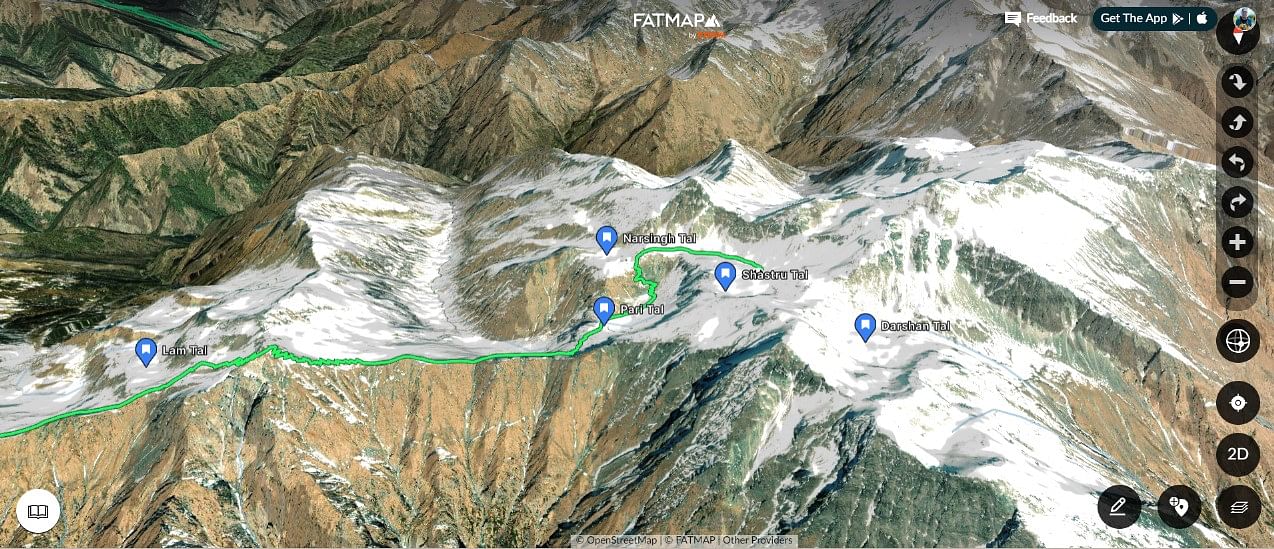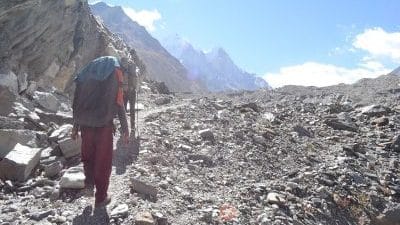The recent tragedy in Uttarakhand that claimed nine lives has been widely discussed in the Indian mountaineering and trekking community and covered in the media. While all reports focus on the local operator’s incompetence and an FIR has been filed against them under IPC Sections 304A and 336 for negligence, not one report holds the Karnataka Mountaineering Association equally responsible for what happened. KMA, which organised and planned the trek for its members through the local operator in Uttarkashi, Uttarakhand, must also be scrutinised.
KMA claimed all participants were medically fit and experienced trekkers, but was that enough to embark on this journey? Did KMA and the local operator have their risk assessment and management (RAM) protocols in place? Were safety standards adhered to before the trek began and crucially, was there an emergency plan in place?
As an avid mountain enthusiast, I understand the allure of the mountains, but there are also inherent dangers. The recent tragedy highlights the peril of mountain adventures, especially when safety is compromised due to cost-cutting and inadequate resources.
Failures in planning and execution
The Sahastra Tal trek in the Garhwal Himalaya is known for its breathtaking yet challenging terrain. The incident underscores the need for thorough preparedness, proper guidance, and asking the right questions before such journeys. One key factor in such tragedies is the involvement of cutting costs, leading to inexperienced labour and fewer resources for proper planning.
In this case, serious questions must be raised about KMA’s role. The joint organisers prepared an itinerary calling it a ‘moderate’ trek without buffer/ acclimatisation days, despite the diverse age group of 30 to 70 years. The trek’s physical demands required thorough preparation and resources, which seemed lacking.
FATMAP and Gaia GPS are useful apps that guide people worldwide for navigation and orienteering. The Sahastra Tal trail has been mapped by Aquaterra, a leading adventure sport company from Uttarakhand, stating it’s a severe (tough) trek, underscoring the need for thorough planning with a good number of days. Tools like these are used by guides and trek leaders to navigate even under adverse weather conditions or at night. However, these mapping apps do not seem to have been used by this group when they were caught in the higher mountains due to bad weather.

Moreover, KMA’s itinerary on their website (generally considered a binding document) underestimated the last day’s trek duration from Lambtal to Sahastra Tal, stating it would take four hours one way, while participants took nearly eight hours to reach one way to Sahastra Tal. This should have raised alarm bells. This was a big flaw in the itinerary that was recognised by many experienced senior guides. The leader and guide underestimated the net altitude gain to reach 4610 mts. Allowing trekkers to remain in the mountains until 3:00 pm, despite knowing that weather typically worsens by 2:00 pm, reflected poor judgement. The weather in June always changes in the afternoon in Uttarakhand. It’s unclear if there was a decision taken by the trek leader and the guide to turn the group back by 11 am to the campsite. This seems to have been the cardinal error that has led to the domino effect and rapid escalation of the situation.
Participants were not adequately clothed for the cold and were exhausted when the weather turned. Proper planning should have ensured that trekkers were well-equipped and prepared for the conditions they faced, including weather changes and extended exertion periods. It’s unclear if they wore base layers, as they left early. Issues like dehydration, cold, and hunger result from poor preparation and planning, not nature. In the mountains, one must always be prepared, especially when going above 4000 metres, irrespective of clear weather.
Outside associations and clubs historically rely on local operators and their guides, as did KMA. Most trekkers from KMA, including the trek leader, were relatively inexperienced in handling drastic weather conditions, which hindered their ability to make prompt decisions on the mountain.
Lack of emergency planning and safety measures
KMA and the local operator treated the trek to Sahastra Tal as a day hike, neglecting necessary safety precautions. Local operators often work in cheap circumstances, unable to make enough money, resulting in a lack of upskilling and professional development in line with international standards. Like every other industry, the adventure industry requires its professionals to constantly upgrade their knowledge. This is not a hobby but a profession. Being an adventure guide or a trek leader means you are responsible for people’s lives, irrespective of the participants’ being fit, declaration or indemnity bonds signed by them.
Trekkers themselves must also be cautious and well-prepared, but many fail to ask critical questions and assess their readiness. None of the trekkers in the group felt the need to question the absence of a rest day/acclimatisation day or emergency plan, trusting the leader’s experience.
Before embarking on treks (easy, moderate, or tough), participants need to enquire about terrain, expected weather conditions, required gear, guides’ qualifications (professional guiding course certificates, Trip Leader courses, first aid courses), and safety protocols like client-to-guide ratio and emergency plans. Fitness, acclimatisation, and familiarity with high-altitude trekking are crucial prerequisites. An ideal client-to-guide ratio, usually one guide for every three to four trekkers, ensures safety, but in challenging cases, the ratio should be closer to 2:1 due to diverse group dynamics. The ideal group size should have been 10-12 participants.
Trekkers have the right to adequate briefing, proper equipment, health and safety checks. They should exercise these rights by asking questions. Completing mountaineering courses makes one a mountaineer, not a guide; guiding certifications are necessary.
The need for dual responsibility
This tragedy underscores the dire consequences of neglecting these aspects. Nine lives were lost not only to the harshness of the mountains but also to preventable oversights. This emphasises the need for stricter regulations for trekking agencies and better awareness among trekkers.
Despite several accidents in the mountains in Uttarakhand, the administration has also not taken cognisance of the seriousness of having mandatory rules and regulations for safeguarding the operating companies as well as the trekkers and mountaineers. Regulatory bodies and the tourism ministries must legislate and enforce stringent standards for trekking agencies, including mandatory certifications for guides, regular safety audits, and robust mechanisms for reporting and addressing safety violations as well as filing incident reports.
If outside adventure travel companies, clubs, and associations that outsource their trek requirements to local adventure operators bring trekkers experienced or inexperienced, they need to be equally liable as the local operator. These clubs and associations have to take the onus of their members whom they take on their treks.
The world over, accident reports prevent future accidents, increase customer awareness, and greatly aid learning. No accident report detailing the circumstances under which nine lives were lost has been shared. Sharing such a report is crucial, and before FIRs and magisterial inquiries are filed, full disclosure from both the operator and the outside party, in this case KMA, is non-negotiable.
The author is an independent journalist, mountaineer, and entrepreneur who has been specifically writing on adventure and mountaineering for over a decade. She tweets @sanushas. Views are personal.
(Edited by Prashant)







Well written article. Only those who have done BMC at national institutes like NIM, HMI can appreciate her writing. In survival techniques , how to face
” benightment” is taught at NIM.
It would be good if IMF makes BMC mandatory fir trek leads, and participants trekking above 15000feet.
World over people trek hike on their own . Make your decisions and don’t blame govt and guides for personal due diligence . Hiking tragedies happen all the time by either folks over estimating or under preparing
This article is bs. The reporter is milking this tragedy for her own benefits. I get that these are questions that need to be asked, but give the families a break – they’re still grieving! Don’t be an #idiot. #dobetter.